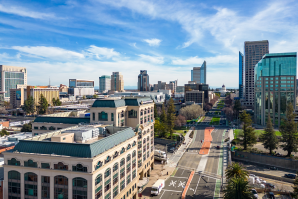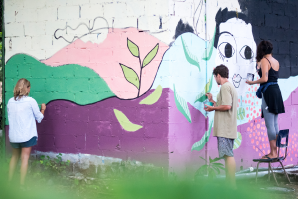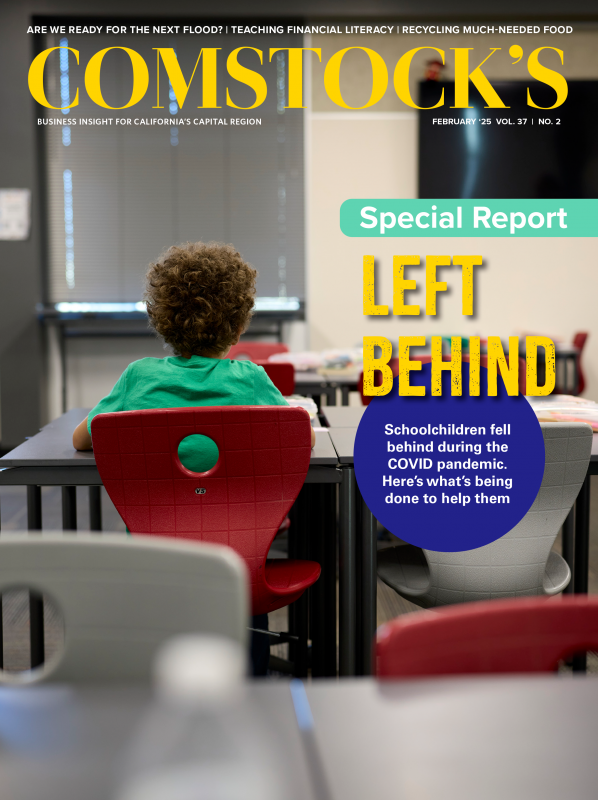Extinguishing the horrific blazes in Los Angeles County last month was a profoundly heroic effort by the combined resources of multiple fire departments and agencies from throughout the state and even beyond (thank you, Oregon, Canada and Mexico!). But this heroic professionalism, tireless know-how and courage still didn’t extinguish the very real and ongoing threats we face throughout California — to our lives, our homes and our businesses.
Observers ask: When will the Golden State learn its lessons about how to prevent or at least minimize the devastating effects of this force of nature? I think we have, over and over. What we have not seemed to learn is that it takes common sense fortified by political will to effect change — two characteristics that too many of our elected and appointed officials seem to lack. While it’s possible the initial sparks that fanned the flames which all-but-erased the city of Altadena while decimating much of the Palisades and Brentwood area might have been deliberately set — the suspects are homeless campers or perpetual arsonists, but the investigation continues — the issue we should be addressing is how did what could have been dowsed in their skirmish stages (if not for the 80-100 mile per hour winds) grow into a conflagration of biblical proportions?
Why were fire hydrants lacking sufficient water pressure? Why was the refurbishing of a reservoir still “in progress” as the region’s notoriously dry Santa Ana winds signaled the approach of the fire season? Why was Los Angeles Mayor Karen Bass, who’d promised to curtail her exorbitant travel record once elected, on just such a junket when all hell broke out in her city? That she returned as quickly as possible and says she monitored the situation by phone and text while speeding back to her constituency isn’t likely to win the praise and thanks of people who lost everything — or the loved ones of those who lost their lives.
The fires are going to decimate the insurance industry, which in turn will impact the banking industry. I’m hoping there will be no bank failures as well. Calamities like these can cause untold harm to not only the people whose homes and hopes were consumed, but also to the industries connected to their well-being, such as insurance agencies and financial firms.
As it is with all catastrophes, there’s plenty of blame to go around. I guess this can be a useful exercise at some point, but it won’t rebuild people’s homes, restore their most valued possessions or, most importantly, stop this from becoming an annual, recurring heartbreak.
We need to ask and answer some obvious questions:
Why do we still have power lines attached to tinder-box poles in areas prone to man- or brush-made firestorms? They should all be underground.
Why do our firefighting fleets have a ridiculously insufficient number of water-tanker trucks (called “tenders”) in proportion to the areas they have to protect?
Why don’t we have more reservoirs?
Reliable news reports indicated that water was scarce when the fires erupted. Downloaded radio messages among various communications and emergency personnel during the fires revealed that firefighters reported hydrants at the scene were going or had gone dry. And as the “Super Scooper” planes gathered water from lakes, rivers and the ocean to dump on fires, they became engulfed by the smoke — and in some cases, by drones sent up by careless idiots who wanted to shoot their own footage of the cataclysm below.
The problem goes back many, many decades to when people saw Southern California as the promised land and began to build homes and businesses there. Then they built some more. Essentially, they were creating a new civilization in a desert — an arid landscape that would eventually need to find and deliver water where it was a scarce commodity; where rainfall was unpredictable and there was rarely enough of it, and nobody saved what rain there was.
I’ve researched various sources about what caused this nightmare. Some informed comments include, “Extreme heat dries out vegetation and the soil. Wildfires ignite more easily, spread faster and burn with greater intensity in these conditions, as parched land is more flammable. In the western U.S., aridity caused by climate change has helped double the amount of combustible forest since 1984” (The Conversation, Jan. 16 2025). And this: “While some fires are fuel-dominated due to century-long fire suppression and changes in land management, others are wind-dominated, particularly in Southern California, like the recent LA wildfires” (Penn State University, Jan. 16 2025).
Fire and wind are non-partisan. We have to stop thinking of whom to blame and start working, immediately, on solutions. Developers who buy a parcel of land that has no access to water have to include in their plans how they’ll provide water. Will they build their own treatment plant, as Sacramento developer Bill Parker did when he built Serrano in El Dorado Hills? Will they build schools for the children of the families who’ll buy their homes? Will they build freeway off-ramps and on-ramps? Will they build their own private fire service, as one LA community did? Can we mandate fire retardant building materials?
And are we smart enough in Northern California — and do we have that political will — to realize the same kind of tragedy can befall us? What do you think?
Winnie Comstock-Carlson
President and Publisher
–
Stay up to date on business in the Capital Region: Subscribe to the Comstock’s newsletter today.
Recommended For You

The Hope of a New Year
FROM THE PUBLISHER: I’m an optimist by nature — and these days, an optimist who realizes that when this country wants change, all we have to do is demand nothing less.

Regaining Lost Land
FROM THE PUBLISHER: When I heard the news about the Sacramento Republic FC ownership change — with Wilton Rancheria, a federally recognized Miwok tribe in Sacramento County, becoming majority owner (while Kevin Nagle maintains his managing partner role) — I joined the entire Capital Region in celebrating what this would mean for Major League Soccer, as well as for the continuing (and delightful) growth of professional sports here.

The First Rule of Art Is to Enjoy It
FROM THE PUBLISHER: I’ve always loved art, in every form I can think of: music, dance, painting, sculpture, film, theater, literature, architecture and even conceptual. After all, art is about taste, memory, the senses — and just as often, can be about political preference, sexual orientation and religious affiliation. In short, art is highly personal.

We Oughta Be in Pictures!!
FROM THE PUBLISHER: Our region has long been one of Hollywood’s well-known secrets. Because of the area’s natural beauty and close to year-round clement weather (the two compelling reasons that made filmmakers leave New York in the early 1920s for a stronghold in Southern California), movies, TV shows and commercials have been shot here for years. What if we had our own film studio?

Some Important Bedfellows: Financial Literacy, Art, Reading and Writing
Comstock’s President and Publisher Winnie Comstock-Carlson examines the shortcomings of California’s public school system.

The Marvel of Milestones
Comstock’s President and Publisher Winnie Comstock-Carlson reflects on 35 years since launching the iconic Capital Region magazine.

The Timeless Value of Associations
Comstock’s President and Publisher Winnie Comstock-Carlson explores the perks of being part of a trade association — and why there are so many in Sacramento.





